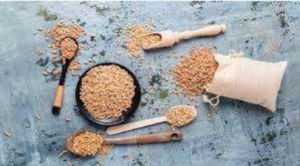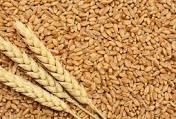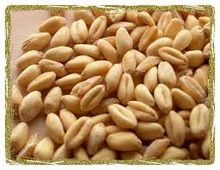
MP Sharbati Wheat
32 - 40 Per Kilogram
25 Ton (MOQ)

Whole Wheat
Get Price Quote
10 Ton (MOQ)
Best Deals from Wheat Meal

Wheat &Rice
Get Price Quote
Customers can avail from us finely processed Wheat Seeds. We are an Exporter and Supplier of Wheat Seeds, appreciated for providing organically cultivated and matured Wheat Seeds. We are also committed to provide impurity and adulterant free Wheat Seeds. With these Wheat Seeds, one can obtain highly nutritious flour for a variety of confectionary items.

Wheat
Get Price Quote
Wheat germ has an abundance of vitamins and minerals, but it is particularly rich in vitamin E. Wheatgerm is known to be the main source of the vitamin B complex in dietary structures throughout the world and includes vitamins like thiamin, folic acid, vitamin B6 and minerals like manganese, magnesium, and zinc .

Wheat
20 - 30 Per Kilogram
1 Tons (MOQ)

Wheat
1,700 - 2,200 Per Quintal
Wheat, any of several species of cereal grasses of the genus Triticum (family Poaceae) and their edible grains. Wheat is one of the oldest and most important of the cereal crops. Of the thousands of varieties known, the most important are common wheat (Triticum aestivum), used to make bread; durum wheat (T. durum), used in making pasta (alimentary pastes) such as spaghetti and macaroni; and club wheat (T. compactum), a softer type, used for cake, crackers, cookies, pastries, and flours. Additionally, some wheat is used by industry for the production of starch, paste, malt, dextrose, gluten, alcohol, and other products. For treatment of the cultivation of wheat, see cereal farming. For the processing of wheat grain, see cereal processing. The wheat plant has long slender leaves and stems that are hollow in most varieties. The inflorescences are composed of varying numbers of minute flowers, ranging from 20 to 100. The flowers are borne in groups of two to six in structures known as spikelets, which later serve to house the subsequent two or three grains produced by the flowers. Though grown under a wide range of climates and soils, wheat is best adapted to temperate regions with rainfall between 30 and 90 cm (12 and 36 inches). Winter and spring wheat are the two major types of the crop, with the severity of the winter determining whether a winter or spring type is cultivated. Winter wheat is always sown in the fall; spring wheat is generally sown in the spring but can be sown in the fall where winters are mild. The nutritional composition of the wheat grain varies somewhat with differences in climate and soil. On an average, the kernel contains 12 percent water, 70 percent carbohydrates, 12 percent protein, 2 percent fat, 1.8 percent minerals, and 2.2 percent crude fibres. Thiamin, riboflavin, niacin, and small amounts of vitamin A are present, but the milling processes removes most of those nutrients with the bran and germ. Most wheat used for food requires processing. The grain is cleaned and then conditioned by the addition of water so that the kernel breaks up properly. In milling, the grain is cracked and then passed through a series of rollers. As the smaller particles are sifted out, the coarser particles pass to other rollers for further reduction. About 72 percent of the milled grain is recovered as white flour. Flour made from the whole kernel is called graham flour and becomes rancid with prolonged storage because of the germ-oil content retained. White flour, which does not contain the germ, preserves longer. Inferior and surplus wheats and various milling by-products are used for livestock feeds. The greatest portion of the wheat flour produced is used for breadmaking. Wheats grown in dry climates are generally hard types, having protein content of 11–15 percent and strong gluten (elastic protein). The hard type produces flour best suited for breadmaking. The wheats of humid areas are softer, with protein content of about 8–10 percent and weak gluten. The softer type of wheat produces flour suitable for cakes, crackers, cookies, and pastries and household flours. Durum wheat semolina (from the endosperm) is used for making pastas, or alimentary pastes.

Wheat
Get Price Quote
16 Metric Ton (MOQ)
We are offering wheat indian milling wheat loose specification •glutien (on wet basis) : 25% min. •protein : 11.0 % min. •moisture : 13.0 % . •test weight : 78 kg/hl min. •foreign matter :1.5 % max. •damaged : 2 % max. •falling number : 300 min. •shriveled / shrunken : 3% max. •broken : 5% max.

Wheat
Get Price Quote
100 Kilogram (MOQ)
Wheat is a grass widely cultivated for its seed, a cereal grain which is a worldwide staple food. The many species of wheat together make up the genus Triticum; the most widely grown is common wheat

Wheat
Get Price Quote
20 Ton (MOQ)

Soft Wheat
Get Price Quote

Wheat
Get Price Quote
Navratna Agro Commodity is the largest supplier trader of Indian Feed Wheat from India. We are the largest indian Indian Feed Wheat trader Indian Feed Wheat Indian Feed Wheat exporter due to direct tie-ups with Indian Feed Wheat suppliers and Indian Feed Wheat manufacturers. As an international trader of Indian Feed Wheat we not only have direct tie up with supplier of Indian Feed Wheat but also manufacturers of Indian Feed Wheat ensuring best quality Indian Feed Wheat from best supplying countries. All our suppliers are primarily dependent on us because of large network of buyers of Indian Feed Wheat all over the world for whom we also act as country specific exclusive procurement agent of Indian Feed Wheat through all our manufacturers and suppliers.

Sortex Wheat
Get Price Quote
Sortex Wheat, Caster Seeds

Wheat
Get Price Quote
1000 KG Kilogram (MOQ)
We are offering wheat.

Wheat
Get Price Quote

Wheat
Get Price Quote
Cotton, Bajra Atta, grains pulses, Gram Flour, Food Supplement

Wheat
Get Price Quote
Potato, Flour, Mustard, bajra grains, Bajra Flour

Wheat
Get Price Quote
Pearl Millet

Wheat
Get Price Quote
Guar Bean, Bajara, Castor Oil, GRAINS, rai

Wheat
Get Price Quote
Spray Pump, Rotavator, rotary garden tools, Reaper, Lawn Mower, Jawar

Wheat
Get Price Quote
Groundnut, Moong, Bajra, copper bottle, Copper Water Bottle